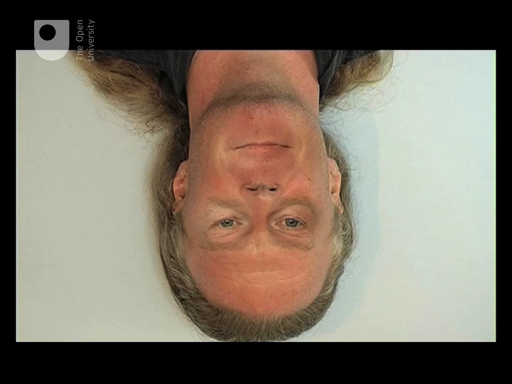3.1 Turning face perception on its head
It is difficult to recognise a face when it is upside down because we have developed face-recognition skills that are based on the ‘configuration’ of the facial features, that is the relative spatial position of the features in the face.
When a face is upright, these cues provide us with a quick and accurate means of recognising a face. However, when the face is turned upside down, the configuration of the features is completely disrupted, meaning the brain cannot use its normal method of face recognition. Instead, the brain must rely on other methods, such as analysing the individual features, which are slower and tend to be less accurate.
The following video provides a very neat demonstration of this phenomenon.

